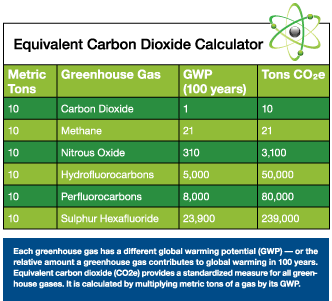Carbon Footprint Gaining a Place on the FM Agenda
If a building pulls electricity from the grid, burns oil or natural gas, or uses products and services, the building has a carbon footprint. The carbon footprint is the measurement of the total greenhouse gas emissions generated directly or indirectly by an entity, whether that's a building, a person or an organization.
There are three types of carbon emissions. Carbon emissions buildings create directly are Scope 1 emissions. They include emissions from fossil fuels burned, like oil and natural gas. Facility managers control Scope 1 emissions because they choose the type of fuel used.
Scope 2 emissions are created from the generation of electricity drawn from the grid. They can be limited through energy efficiency, but you do not directly create the emissions and don't control them because you don't control the method by which the electricity is generated. Coal burning electricity plants have a much higher carbon intensity than natural gas burning plants. Each state has different sources of electricity generation, which determines the carbon cost of each kilowatt used. Therefore, a building's Scope 2 emissions vary with geography.
Scope 3 emissions are far more complicated because they are generated by everything else purchased and outsourced. For example, if you decide to upgrade an atrium floor with granite imported from Italy, the emissions generated in the mining, cutting, polishing and transport of the granite constitute Scope 3. When you ship a package, the emissions are Scope 3 for you and Scope 1 for the shipper. When you throw out wood from a renovation project, the methane created is considered Scope 3 emissions for you and Scope 1 for the city landfill.
Identifying the Major Offenders
There are six major greenhouse gases: carbon dioxide (CO2), methane (CH4), nitrous oxide (N2O), hydrofluorocarbons (HFCs), perfluorocarbons (PFCs) and sulphur hexafluoride (SF6). Each gas has a multiplier to represent its 100-year global warming potential (GWP); using that multiplier, a carbon footprint can be calculated in carbon dioxide equivalents (CO2e). (See "Equivalent Carbon Dioxide Calculator" below.)
The use of CO2 equivalents allows for an "apples-to-apples" comparison of greenhouse gases. The comparison is especially useful for benchmarking. It is easier to identify where to focus behavior changes or investment when you know the largest contributors to the overall footprint in a base number of metric tons of CO2e. CO2e becomes a vital metric in managing the operation and maintenance of your building.
There are many other reasons to measure your building's carbon footprint. A large carbon footprint relative to your competitors is an indication of future liabilities, not only from an emissions standpoint, but also in terms of energy inefficiencies. This is why upper managers are beginning to demand not only Scope 1 and Scope 2 measurements, but also want to be aware of any weaknesses found in supply chains (Scope 3).
Data Required
One of the largest demands for emissions data comes from the government. Last year, the Securities and Exchange Commission (SEC) ruled that public companies must disclose their Greenhouse Gas risk in their filings.
Also, companies that create more than 15,000 metric tons of CO2e annually from stationary sources of emissions need to report their carbon footprint to the EPA. There are also regional requirements that aren't based on volume. For example, if you are in the northeastern states and produce electricity, you are under legal obligation to measure and report your carbon emissions. If you are manufacturing in California, there are emissions-reporting rules as a result of new laws, like AB32.
Lastly, pressure has come from the biggest companies and municipalities. For instance, Wal-Mart has issued a supplier directive to be more sustainable. As part of this announcement they include 15 questions for suppliers. The first four questions are about measuring and reporting the carbon footprint of the organization. This is not unique. PlaNYC, New York City's sustainability plan, requires owners of buildings larger than 50,000 square feet to conduct an annual analysis of energy consumption, sub-meter non-residential tenant spaces larger than 10,000 square feet, and conduct energy audits.
There are many initiatives to benchmark and lower emissions from the building space because they make up such a large portion of the emissions in the United States. In 2008, the commercial sector alone created 1.08 billion metric tons of CO2e emissions from energy usage. The commercial sector accounted for 19 percent of total U.S. energy-related emissions. The percentage for the sector has been growing since 1990, when it had a footprint of 785.1 million metric tons.
Related Topics:













